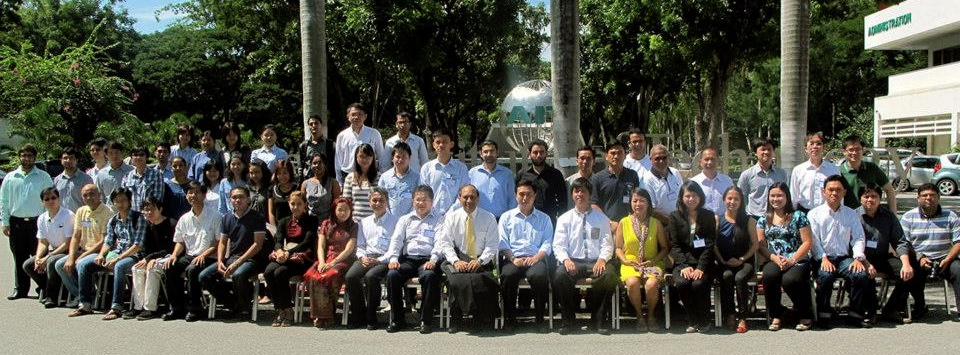The two-day seminar at AIT drew over sixty participants from the
Philippines, Myanmar, Thailand, Brunei, and Hong Kong, ranging from
engineering professionals to students from AIT. It provided hands-on
demonstrations of performance-based design of concrete buildings.
According to the organizers, performance-based approaches have gained
considerable acceptance in the recent years as a way for determining
and designing structures to protect against specific natural hazards,
especially earthquakes.
AIT engineers say it provides a rational and systematic way for
determining the performance of structures by using relatively rigorous
techniques and tools, including the effects of non-linearity and
dynamics to achieve specific response targets.
Delivering an overview on Performance Based Design (PBD), Dr. Naveed
Anwar, Executive Director, AIT Consulting, elaborated on its
objectives, criteria, and outcomes, focusing on how it can be used to
withstand the effects of earthquakes.
In a lecture on Modeling for Pushover and Nonlinear Dynamic Analysis,
Dr. Naveed explained modeling nonlinearity in materials, sections and
members, and outlined the concept of the P-Delta Effects. Participants
later gained hands-on training on nonlinear modeling concepts and
procedures in SAP2000 and modeling for PBD in PERFORM 3D by Mr. Thaung
Htut Aung and Mr. Shabir Talpur, respectively.
The second day of the seminar included lectures covering
capacity-based design of structural components and site-specific
seismic hazard assessment. Dr. Teraphan Ornthammarath, a scientist at
Seismic Risk Evaluation and Mitigation Regional Integrated Multi-Hazard
Early Warning, System for Africa and Asia (RIMES), focused on the
various components and processes for Probabilistic Seismic Hazard
Assessment (PSHA) in relation to an actual project conducted for Metro
Manila, an area in the Philippines with high seismic activity.
Dr. Pennung Warnitchai, Associate Professor, Structural Engineering,
School of Engineering and Technology, AIT, explained the impact of wind
on buildings, tall chimneys, smoke stacks, observatory towers, and
other structures. He provided visuals showing the devastating effects
of differing ground motions and strong winds all over the world, and
illustrated wind tunnel model tests conducted for various types of
structures.
In a session on PBD of core wall buildings, Mr. Thaung Htut Aung
highlighted topics on material properties, loading criteria,
performance evaluation criteria, finite element modeling, and nonlinear
modeling of shear wall and coupling beams.


